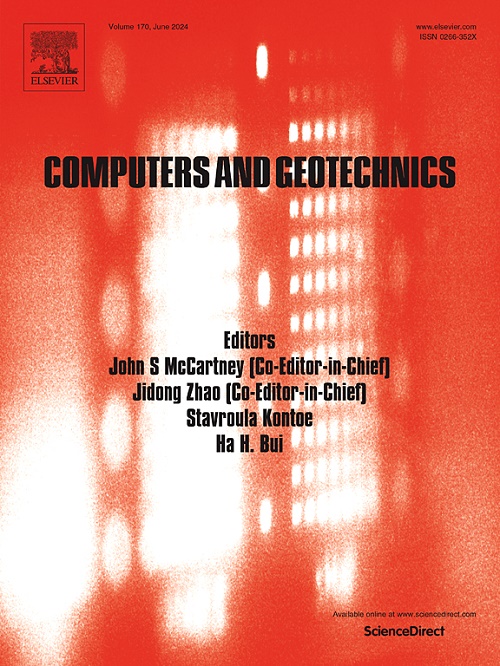考虑地表和地下空间内壁对流的能源兵桩传热解析解
IF 5.3
1区 工程技术
Q1 COMPUTER SCIENCE, INTERDISCIPLINARY APPLICATIONS
引用次数: 0
摘要
本文章由计算机程序翻译,如有差异,请以英文原文为准。
Analytical solution of heat transfer for energy soldier piles considering convection at the ground surface and internal wall of underground space
This paper presents a new 2-D heat transfer model for the energy soldier pile wall-internal structural wall during the operation and maintenance period of the internal building. Both the convection at the ground surface and the internal wall boundary convection effects are considered. The analytical solution to the problem is obtained by using the separation variable method and is compared with numerical solutions and an existing analytical solution to verify the correctness of the solution. The effects of the convection coefficient, thickness of overlying soil, and soil thermal conductivity on heat transfer are analyzed. Results show that the dimensionless temperature rise decreases with increasing internal/external convection heat transfer coefficient, increasing thickness of overlying soil, and decreasing soil thermal conductivity. For different times of operation, the temperature below the dimensionless depths of 2.1/6.6/9.5 (for the soil side) and 3.4/7.5/10.0 (for the underground space side) is mainly controlled by the heat source. For the summer conditions, the average air temperature is higher than the average pile-soil temperature, it is the ambient temperature that dominates, not the convection coefficient. The depths of ground convection effects corresponding to thicknesses of less than 1.0 m on the 30th day of operation are concentrated at depths of about 10.0. Under the premise of ensuring structural and engineering safety, using the smaller thickness of overlying soil has a better effect on both heat flux and temperature rise.
求助全文
通过发布文献求助,成功后即可免费获取论文全文。
去求助
来源期刊

Computers and Geotechnics
地学-地球科学综合
CiteScore
9.10
自引率
15.10%
发文量
438
审稿时长
45 days
期刊介绍:
The use of computers is firmly established in geotechnical engineering and continues to grow rapidly in both engineering practice and academe. The development of advanced numerical techniques and constitutive modeling, in conjunction with rapid developments in computer hardware, enables problems to be tackled that were unthinkable even a few years ago. Computers and Geotechnics provides an up-to-date reference for engineers and researchers engaged in computer aided analysis and research in geotechnical engineering. The journal is intended for an expeditious dissemination of advanced computer applications across a broad range of geotechnical topics. Contributions on advances in numerical algorithms, computer implementation of new constitutive models and probabilistic methods are especially encouraged.
 求助内容:
求助内容: 应助结果提醒方式:
应助结果提醒方式:


